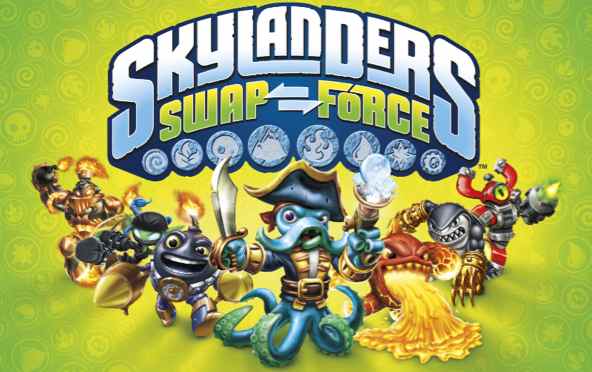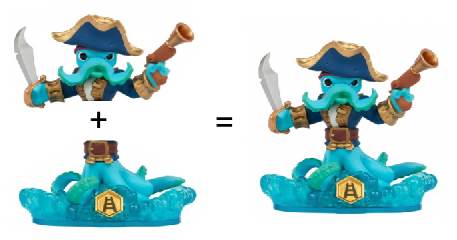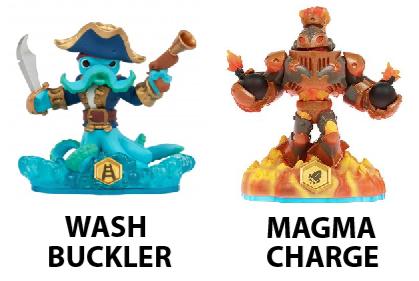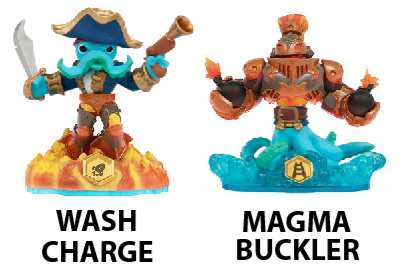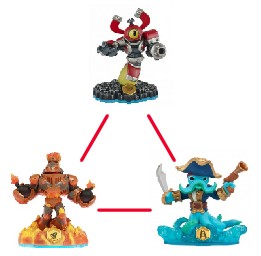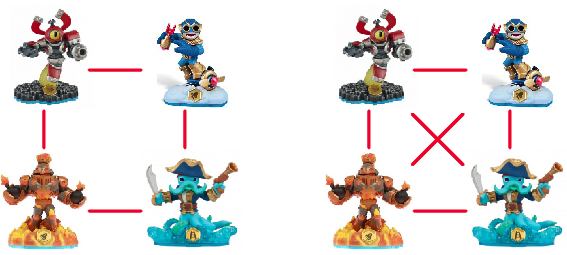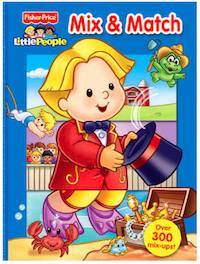Reach for the Skylanders!
Burkard Polster and Marty Ross
The Age, 25 November 2013
If you have children of a certain age (or are a child of a certain age) you'll probably be familiar with Skylanders, one of the world's most successful computer game franchises. Much of Skylander's success can be attributed to the clever gimmick of having plastic figurines transformed into the game by placing them on a "portal" plugged into the game console.
Different Skylander characters have differing abilities, which makes for plenty of variety in the way the game is played. A cunning consequence of this variety is that in order to see everything that is possible in the game you need to buy all the characters. Now, the possibilities have multiplied.
In the latest incarnation, Skylander Swap Force, a brand new range of "swappable" characters has been introduced. Each associated figurine comprises a bottom and a top part, which are held together by magnets.
The nifty thing about the new figurines is that any top part can be matched with any bottom part, resulting in lots of new characters. The very cool trailer for the game proudly proclaims that there are 256 "swappabilities".
That immediately suggests a nice puzzle for young players of the game: if there is a total of 256 possible combo-characters, how many original characters must there be? (And, how much money will their very patient parents have to shell out?)
How does one solve this puzzle? Google, it obviously! However, if you're the child of a cruel Maths Master then googling such a question is forbidden: there's no choice but to use your brain.
Junior Maths Masters have been set such puzzles before and they know where to begin: look for a pattern. So, let's first consider the starter set, consisting of Wash Buckler and Magma Charge. How many different characters can we create starting with just these two?
It's easy to see the answer is four. Swapping the tops creates two more characters, aptly named Wash Charge and Magma Buckler, to go along with the original two.
What if we then add Blast Zone into the mix, giving us three characters to play with? Maths Master Karl and Maths Mistress Lara put on their thinking caps.
Lara gets there first, arguing as follows: Wash Buckler's top can be combined with any of the three different bottom parts, and the same is true for any other top. That is, any of the three tops can be combined with any of the three bottoms, so there must be a total of 3 x 3 = 9 combinations. From there, Lara quickly figures out that a set of N swappable characters allows N x N = N2 combinations. She then tries squares until she gets to 162 = 256, indicating there must be 16 original characters. Full marks.
Interestingly, Karl tries a different strategy. He first counts the number of ways the three characters can be paired. There are three such pairings, and Karl knows that every such pairing corresponds to two new characters. So, Karl concludes that there are six characters in total.
Unfortunately, Karl forgets to include the original three original characters. With some gentle direction he realises his error and arrives at the correct answer of 6 + 3 = 9 characters in total.
Now Karl's approach does not immediately suggest a general formula to handle N original characters. So, the next step for Karl is to figure out the number of combinations when beginning with four characters. However Karl is on a roll and uses his pattern recognition skills: three characters in a triangle gives three pairings, so four characters in a square gives four parings!
Alas, patterns can be deceiving. In fact four characters allows for six possible pairings. it doesn't take much for Karl to see this and then, calculating as before, he quickly deduces that four characters results in (2 x 6) + 4 = 16 combo-characters. With this insight, he also manages (eventually) to figure out that a total of 256 swappabilities meant there must be 16 swappable characters.
So, whose method is better? Lara's is definitely more direct, however we shouldn't dismiss Karl's efforts too hastily. What is interesting is that we have found two distinct methods of counting the number of possibilities. Identifying the two calculations produces a new and illuminating equation.
Lara's method tells us that starting with N characters results in N2 swappabilities. By contrast, Karl's method calculates the swappabilities by first counting the number of pairings of N characters. Identifying the complete calculations produces the equation
Rearranging, we find that
Very nice. And, many such equations can be proved by this twice-counting technique.
Lara and Karl went on to try further experiments. They attached two tops together, and they tried amputating a Wash Buckler tentacle. Unfortunately, these Frankenstein creations refused to show up in the game, which was a great shame: who knows what mathematics they might have discovered?
Of course, the idea behind swap force is not new. Mix and Match books have been around forever, and are great fun.
In the particular book pictured above every character consists of a top, a middle and a bottom, and the book promises that there are "over 300 mix-ups". So, now you can ponder: how many swappable characters must there be? And for some grown-up pondering, what secret formula is hidden behind the number of mix-ups?
Burkard Polster teaches mathematics at Monash and is the university's resident mathemagician, mathematical juggler, origami expert, bubble-master, shoelace charmer, and Count von Count impersonator.
Marty Ross is a mathematical nomad. His hobby is helping Barbie smash calculators and iPads with a hammer.
Copyright 2004-∞ ![]() All rights reserved.
All rights reserved.
